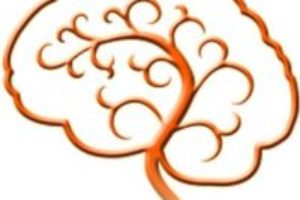Across the world, the COVID-19 pandemic has turned daily life upside down. Amidst increasing uncertainty, your brain is your most valuable asset. Your brain is ready to change and grow and help you adapt. In the months ahead, balanced brain activity will help you roll with the punches.
Anything you want to accomplish with the mind, from learning faster to sleeping soundly, depends on an agile brain. So let’s review some basics about how to roll with the punches, and even throw a few of our own!
You know the saying, “don’t put all your eggs in one basket.” It’s the same way with your brain: don’t keep all the brain activity in one area. This exhausts the brain and darkens the mind. So, let’s go through our four brain assets, and we’ll discover how we can easily work each one while at home.
Parietal lobe, the self-reliant brain asset
The first brain asset is the yellow area, called the parietal lobe, located at the top and back of the head. This brain asset is physical, and gives us three of our six senses: taste, touch, and proprioception, or balance. The parietal lobe is fearless and likes adventures. It HATES to sit still. It is self-reliant and not that sociable, so it is a perfect brain asset to work while social distancing!
These days, I am working this asset more than I usually do, with hiking and walking, and hands-on activity such as cleaning and yard work. I have also started taking an online Zumba class. Other ways to engage the parietal lobe include home repairs, drawing, swimming, biking, and sculpture.
Occipital lobe, the competitive brain asset
The second brain asset is the green area, called the occipital lobe, located at the bottom and back of the head. This brain asset is visual. It LOVES to sit still and gaze at the world through screens: television, computer, smartphone, tablet, you name it. The occipital lobe LOVES to win and it HATES to lose.
You have to be very careful with this brain asset when cooped up, because it will fixate on bad news. About a month ago, I was following coronavirus updates for hours every day. I was so distracted and anxious! No wonder, since a steady diet of scary news overwhelms the occipital lobe. So, I stopped following the news so much to reduce activity in my occipital lobe, and make other brain assets work more. Guess what: I became less anxious and reactive, and more thankful and proactive.
A good way to help your occipital lobe recover from bad news is to blow off steam with games of chance, such as backgammon, bingo, or cards. Other relaxing ways to engage this green asset are with a coloring book, jigsaw puzzle, or a movie. But try to avoid too much screen time, especially at night.
If you are working in front of a screen most of the day, be sure to work one of the other brain assets in the morning and evening.
Temporal lobe, the friendly brain asset
Our third brain asset is the pink area, called the temporal lobe, located around the ears. The temporal lobe helps us with smell and hearing. The temporal lobe LOVES people and HATES social distancing. I have been working this pink area extra hard to keep it happy by cooking for my husband, talking on the phone more with friends and family, praying, listening to music, and singing.
Some other ways to engage this brain asset include playing a musical instrument, listening to books on tape, looking through old family albums, sending cards and letters to friends and family, helping others, expressing gratitude to others, and participating in group activities safely.
Frontal lobe, the proactive brain asset
Last but not least is the huge blue area, called the frontal lobe, which is easy to locate because it is out in front. The frontal lobe accounts for a third of your brain, and it is the brain asset you really need right now because it LOVES meeting the challenges of a changing environment. That’s what these times require us to do: adapt and roll with the punches!
The frontal lobe does not live in the present moment, like the other three brain assets. The frontal lobe is always out in front, looking into the future, scouting for opportunities, making a plan to achieve goals, and delivering the behavior to get us where we want to go.
I am working my frontal lobe by writing my next book, doing yoga via Zoom, keeping a gratitude journal, and delivering my teaching in new ways such as by video. Chess, bridge, golf, and tai chi are also good exercise for the frontal lobe. Initiating ANY new healthy behavior works the frontal lobe.
There is a fifth brain asset, and it’s the most important one, because it is in charge of your life story, as well as your memory and motivation. But we have run out of time, so the fifth brain asset will have to wait till another time.
Remember, don’t put all your eggs in one basket. Balanced brain activity will help you roll with the punches in the days ahead. Work all four brain assets daily to stay sharp and bounce back.
To learn more about how to exercise your brain assets, see my book Better with Age: the Ultimate Guide to Brain Training.






